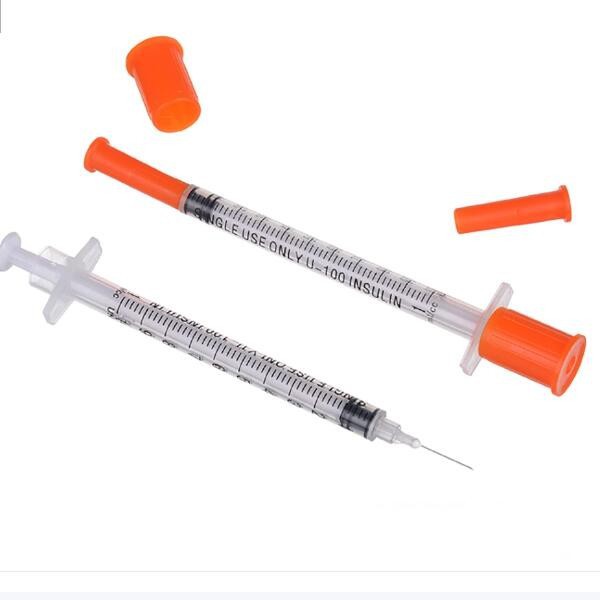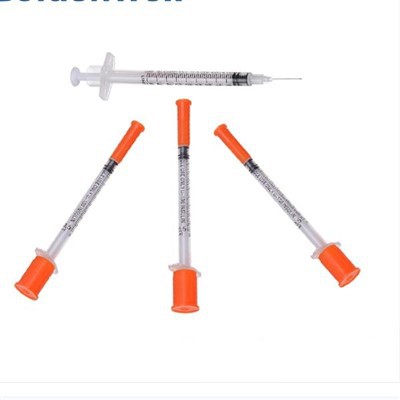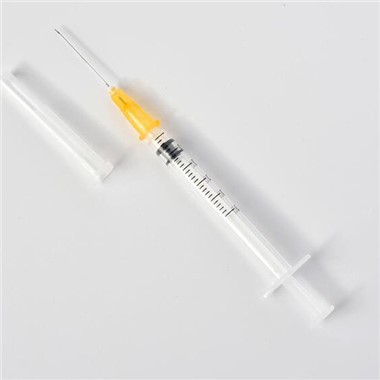What Is Syringe
A medical device that is used to inject fluid into, or withdraw fluid from, the body. A medical syringe consists of a needle attached to a hollow cylinder that is fitted with a sliding plunger. The downward movement of the plunger injects fluid; upward movement withdraws fluid. Medical syringes were once made of metal or glass, and required cleaning and sterilization before they could be used again. Now most syringes used in medicine are plastic and disposable.
Benefits of Syringe
Easy to use
The plunger can be easily depressed to deliver the medication to the patient. The needle can be detached and disposed of safely in a sharps container. Overall, syringes are a straightforward and effective tool for administering medication.
Accuracy
An accuracy syringe is a medical device that can accurately measure and dispense fluids in precise amounts. It is commonly used in medical settings to administer fluids, medications, and vaccines with accuracy and consistency.
Versatility
Syringes are medical instruments that are primarily used for injecting medications, vaccines, or fluids into the body. However, they have many other applications beyond medical use.
Safety
Many syringes now come with safety features such as retractable needles to further reduce the risk of accidental needlesticks and potential transmission of bloodborne infections.
-
Disposable Medical Insulin Syringe
Insulin syringe is an essential device in managing diabetes. It is a small, portable, and
Add to Inquiry -
3ml Disposable Syringe With Needle
Product Description Size: 0.5ML,1ML, 3ML, 5ML, 10ML, 20ML ,50ML, 100ML,150ML Style: 3-parts ISO
Add to Inquiry -
Disposable Injection Syringe With Needle
The syringe is a widely used medical device that is designed to deliver precise amounts of
Add to Inquiry -
Sterile Disposable Insulin Pen Needle
China Wholesale Medical Supply Perfect Fit with Injector 31g 32g 33G 34G Sterile Disposable Insulin
Add to Inquiry -
Basic Info. Model NO. Plastic syringe Technics Bottle Blowing Transport Package Carton
Add to Inquiry -
Safety Syringe with Retractable Needle
1. With/without disposable Hypodermic Needle. 2. Made from Medical grade Transparent
Add to Inquiry -
* Type: Pull and Back Type. * Material: medical grade PP. * Special design prevents the plunger
Add to Inquiry -
3-Pieces set: Needle, barrel, plunger. Sizes: 1ml,2ml, 3ml, 5ml, 10ml, 20ml, 50ml, 60ml.... Needle:
Add to Inquiry -
Medical Disposable Self-Destroy Syringe
1. Vented or Non-vented Spike. 2. Flexible Drip Chamber with Filter 15μ. 3. 100ml, 150mlGraduated
Add to Inquiry

Quality control
We have built a professional QC team to accurately inspect every raw material and every process of production.
Professional team
Our professional team collaborate and communicate effectively with one another, and are committed to delivering high-quality results. They are capable of handling complex challenges and projects that require their specialized expertise and experience.
Customized services
We understand that each customer has unique manufacturing needs. That’ s why we offer customization options to cater to your specific requirements.
One stop solution
From the begining inquiry and throughout the entire process until you receive the goods. we are dedicated to supporting you every step of the way.
Standard syringe
This is the most common type of syringe, consists of a plastic or glass barrel, a plunger, and a tip that can be fitted with a needle or a catheter.
TB syringes
They are commonly used for tuberculosis testing and vaccinations. Syringe also has bold scale markings that assist in making accurate dosage measurements and delivery easy, and their smaller and thinner size makes them easier to control and less threatening to patients.
Allergy syringes
An allergy syringe administers the shot in two phases. Allergy syringes are used in allergen immunotherapy, which is one of the most effective forms of allergy treatment.
Disposable syringe
This type of syringe is intended for single-use only and is disposed of after use, ensuring that the risk of cross-contamination between patients is minimized.

Material of Syringe
Syringes can be made from a variety of materials, including plastic, glass, and metal. The most commonly used syringes are made of plastic, including polypropylene, polycarbonate, polyethylene, and polyurethane. These materials are lightweight, easy to handle, and inexpensive. Glass syringes are primarily used in laboratory settings or for special medical procedures such as intravenous injections. Metal syringes are made of stainless steel or titanium and are used to collect and dispense highly viscous substances or for long-term drug delivery. The choice of material depends on the intended use of the syringe, its chemical compatibility with the drug or sample being delivered, and the level of precision required.

Administering vaccinations and medication
Syringes are commonly used to administer vaccines and medicines to patients. They are available in various sizes and types, depending on the volume and viscosity of the medication.
Drawing blood
A syringe is used for venipuncture to draw blood samples from patients for diagnostic or therapeutic purposes.
Laboratory experiments
Scientists use syringes to measure and transfer liquid samples to perform experiments in chemistry, biology, and medicine.
Veterinary procedures
Syringes are used in animal care for administering medication, vaccines, and nutrients to animals.
Craftsmanship of Syringe
The manufacturing process of syringes involves precision engineering and requires skilled employees. It starts with the production of the barrel and plunger using high-quality thermoplastic materials. The barrel is then checked for its accuracy and quality.Next, the needle is attached to the syringe by a process called crimping, which involves placing the needle on the hub of the syringe and using a crimping machine to secure it in place.After this, the syringe is assembled and tested for quality control. The process of quality control involves checking the syringe for leaks, measuring the dimensions, and ensuring that the markings on the syringe are accurate and legible.
How to Choose a Syringe?




Volume capacity
Choose a syringe that can hold the volume of liquid or substance you need to measure or dispense. Syringes come in various sizes, ranging from a few microliters to several milliliters or more.
Type of material
Syringes can be made from different materials such as plastic, glass, or metal. Plastic syringes are lightweight and disposable, while glass syringes are more durable and can be sterilized for reuse. Metal syringes are often used for specialized applications.
Accuracy and precision
For applications requiring high accuracy and precision, choose a syringe with zero, or extremely low dead-volume, with a gas-tight feature. This will ensure proper handling of samples in the range.
Needle compatibility
Consider whether you need a syringe with an attached needle tip for attaching separate needles. The needle size should be appropriate for the viscosity and volume of the substance you are working with.
Viscosity
The viscosity of the substance you're working with can impact the syringe choice. For highly viscous liquids, you might need a syringe with a larger diameter, a more robust plunger mechanism, and a larger inner-diameter compatible needle.
Disposable and reusable
Consider whether you need a disposable syringe for one-time use or a reusable one that can be sterilized and used multiple times. This decision affects both cost and environmental impact, as well as the quality of your application.
1 mL and 1 cc syringe
Intended for lower-dose medications. Their needles are no longer than half an inch and have needle gauges between 29G and 31G. 1 cc syringes are commonly used for self-care by those taking diabetic medication at home.
3 mL
The needle length of this syringe depends on the patient's age and ensures no injection site reactions. The needle gauges are between 23G and 25G. These syringes are used for vaccination.
5 mL
Used for intramuscular injections, these have a needle gauge size between 22G and 23G.
10 ml
Has a needle gauge between 22G and 23G and a needle length between 1 and 1.5 inches. Intended to be used for large-volume intramuscular injections.

Our factory
Taizhou Sanxin Medical Technology Co., Ltd. is specialized drain bag,urine bag and festival lights manufacturer from the year 2011 to now. Owing a manufacturing area of 20000 square meters, the production ability is 3 million pieces per month. Our annual sales turnover is 10 million US dollars. We have exported to USA,Germany, Russia, Italy, Brazil, South Africa, Tanzania, Pakistan, and so on.The factory area is more then 20000 square meters and has more then 200 employees.


FA
As one of the most professional syringe manufacturers and suppliers in China, we're featured by quality products and low price. If you're going to wholesale bulk syringe for sale, welcome to get pricelist from our factory. Also, customized service is available.
insulin syringe safety needle, monoject syringe with needle, 20 ml syringe








